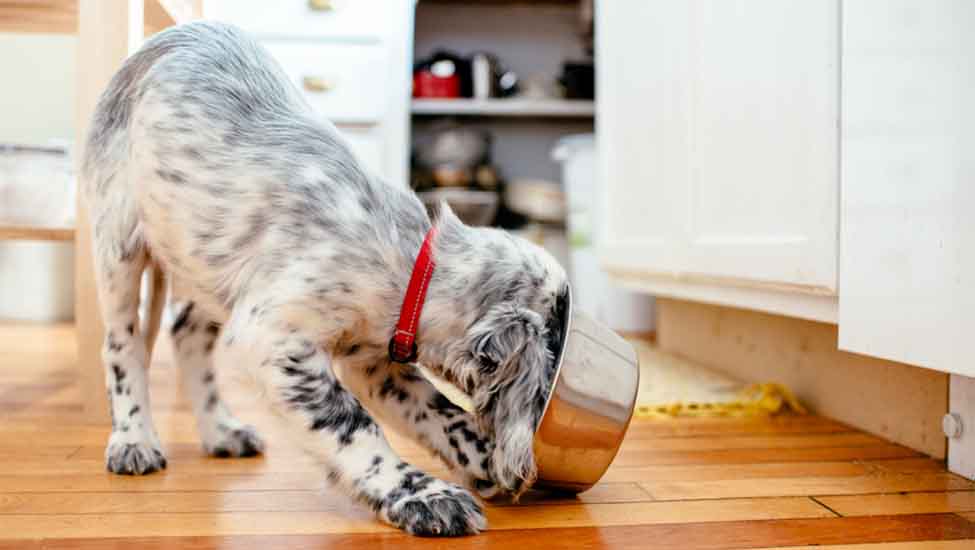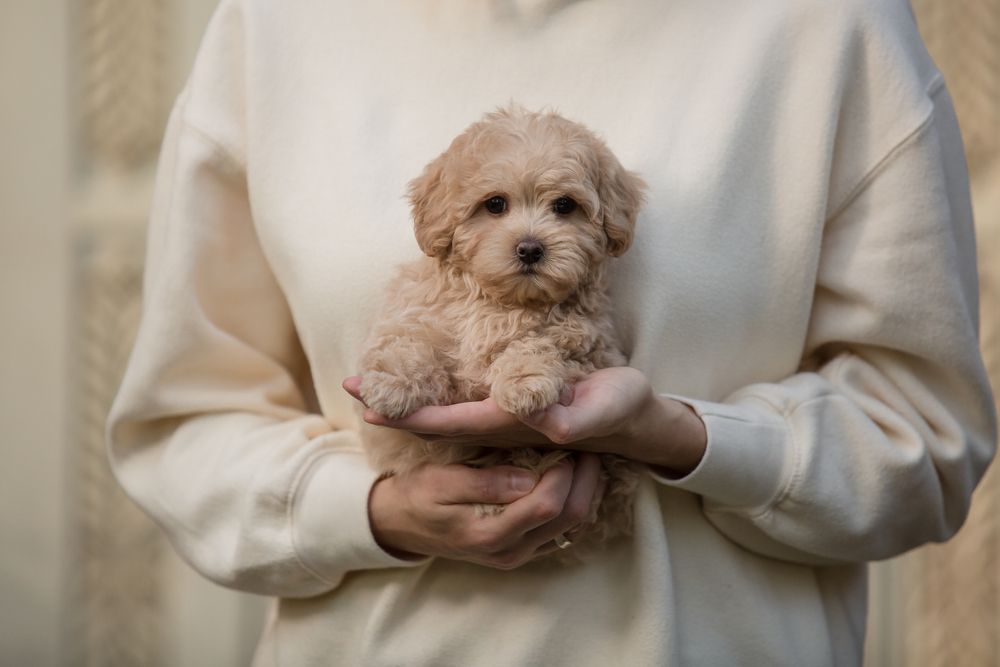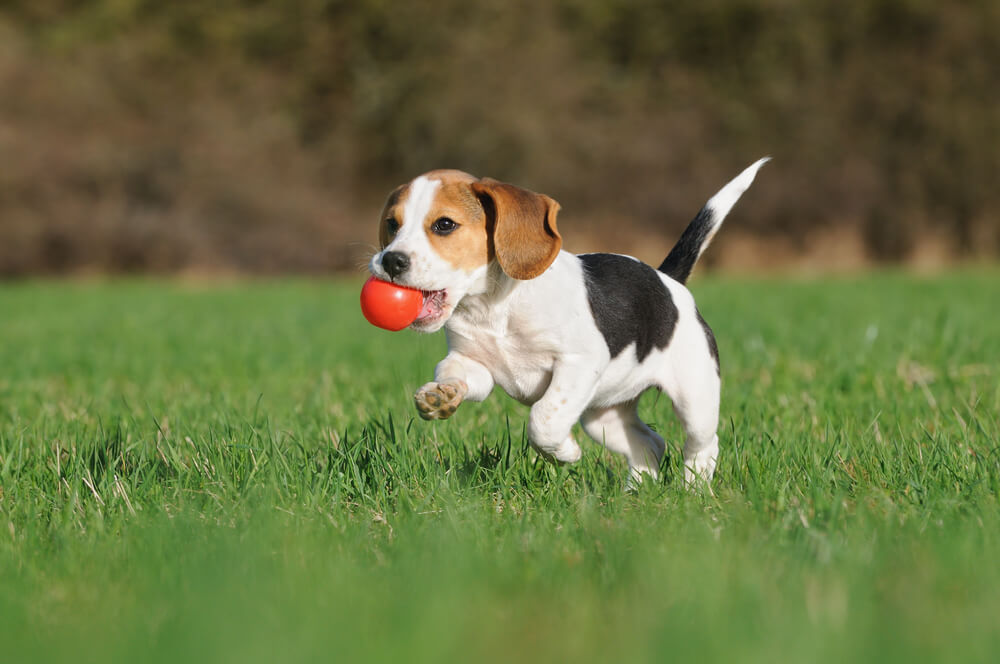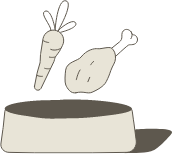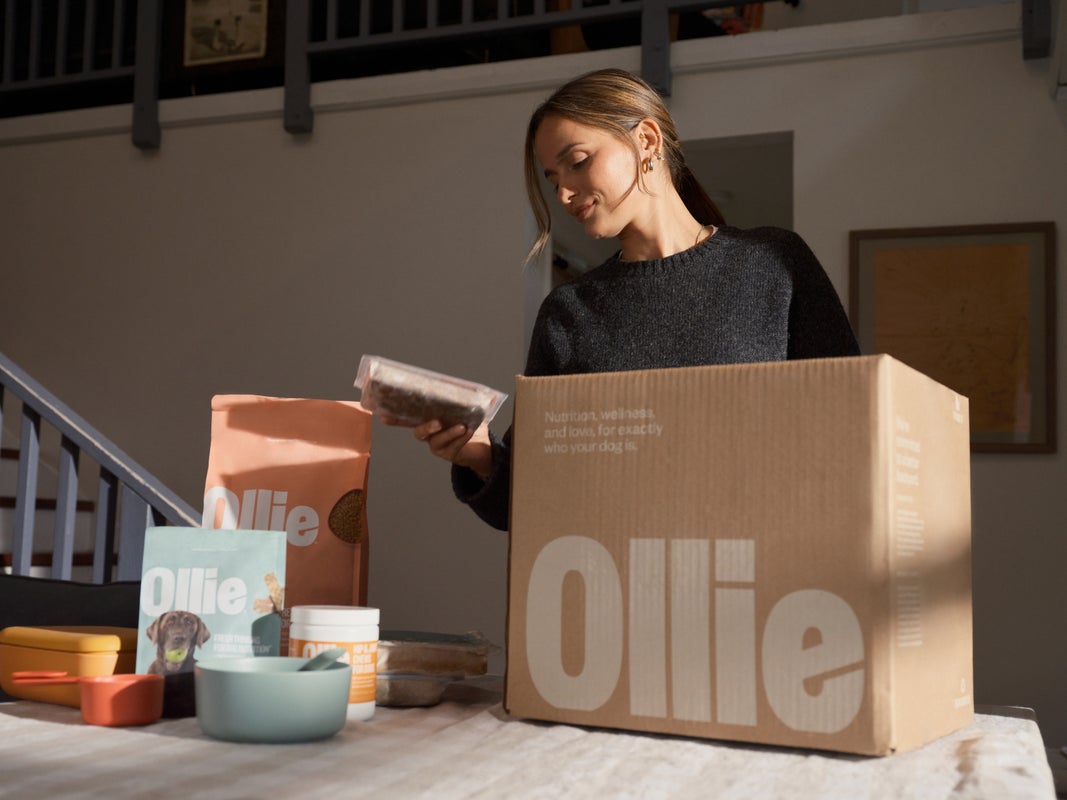Hey Ollie blog readers! We’re offering you an exclusive 60% OFF your starter box! Try now!
Got a dog who eats too fast? When it comes to mealtime, a lot of dogs can’t help but wolf down their food—and that’s totally normal. It’s part of a dog’s nature to gobble up his food. But sometimes your dog eating to quickly can cause adverse effects. Here’s how to tell if your dog is eating too fast and how to slow him down.
Is My Dog Eating Too Fast?
It’s instinctual for dogs to eat quickly, says Ernie Ward, DVM, CVFT, author of Chow Hounds: Why Our Dogs Are Getting Fatter and founder of DogGone Healthy, nutritional and behavioral care practice in Calabash, NC. Some breeds, like labs, even have a gene associated with food drive that makes them more prone to wolfing down their dinner, he explains.However, it is possible for a dog to eat too fast. In the worst cases, gulping down food can be deadly for dogs. So how can you tell if your pup is munching his meals too fast? Unfortunately, it’s not that easy to gauge. “There’s not a measure on the stopwatch for what constitutes too fast,” says Ward. “Many dogs eat rapidly and have no problem whatsoever. Others eat moderately fast and then are in discomfort.”
Here are some of the signs your dog eating fast could be a problem.
My Dog Eats Too Fast and Then Throws Up
If your dog vomits after eating, it’s possible that he’s eating too quickly. When dogs gobble up their food, they can ingest big pieces of kibble without properly chewing them first. Fast eating also cases dogs to take in too much air. Both unchewed food and air can cause your dog to throw up after eating too fast. This is a problem both your pup and your carpets, of course!
Dog Gets Tired After Eating
If your dog lies down following feeding time or seems lethargic, that could be a sign that their stomach hurts. And if they’ve also gulped down too much air, that could also result in bloat (when the stomach is expanded beyond its capacity too rapidly) or, in the worst case, a condition called gastric dilatation-volvulus (or GDV). During GDV, the dog’s expanded stomach flops around and flips over itself. “When this happens, the stomach is distended with water, air, and food,” says Ward. “The esophagus and the intestines end up getting completely shut off, which cuts off blood supply to the stomach and the aorta. At that point, you have limited time to save your dog’s life—they can die within hours.”
It’s impossible to distinguish between bloat and GDV (vets can’t even tell the difference without an X-ray). So if you see your dog lying down in pain after eating and that could be a warning sign, get them to the vet ASAP. Surgery can possibly save a pup from GDV if it’s caught quickly enough.
Some dogs are more prone to bloat and GDV than others. If your dog has a long chest and deep abdomen (like Great Danes and German Shepherds), they might be at risk of bloat or GDV. “That deep, barrel-chested frame can allow extra room in the abdominals and lower thorax (below the rib cage) that lets the stomach take in more food and air and expand more quickly than the stomach of a more compact dog,” says Ward. “If there’s extra room for the stomach to expand and wiggle around, that’s where we get into trouble.”
How to Slow Down a Dog Who Eats Too Fast
Think yours could stand to stop scarfing? Use these tips to help him slow his roll.
#1 Buy a Slow Feed Dog Bowl
A dog bowl or puzzle specially designed with ridges, a maze, or flaps will make your pup work a little harder for their food (and slow them down). “Activity feeders and puzzles are absolute lifesavers for many dogs,” says Ward. Even if your pet isn’t a crazy-quick eater, a slow-feeding bowl could be a good idea, says Ward, because they make mealtime a more fun, stimulating experience. “Slow-feeder bowls engage your dog’s scavenger and prey drive and intellect in a way a normal bowl doesn’t,” he explains.
Ward suggests looking for slow feed bowls that are durable (read: your dog can’t destroy it with her teeth) and made with BPA-free plastic. Buy a few bowls or puzzles and rotate them every week or so to keep your pup on her toes (er, paws). Whatever the shape, remember to keep your dog’s bowl clean and safe.
#2 Put a Ball in Your Dog’s Bowl
If your dog doesn’t seem too interested in a slow-feeder bowl, or if you’re traveling and need another option in a pinch, simply put a tennis ball or durable chew toy approximately that size in a regular bowl along with the food. He’ll have to nose around and push the ball back and forth while he eats, slowing down mealtime a bit and making it more fun at the same time.
#3 Try Smaller, More Frequent Meals
If all else fails, try some good old portion control for your dog. First, check if you are feeding your dog the proper amount for her size. Then try divvying up her dinner into smaller portions. Your pup can’t dive into a big, fast dinner if you’re only giving her a little nibble at a time. Divide your dog’s meal into four smaller servings and give her one every 10 to 15 minutes until she’s finished her supper—slowly.
The Ollie blog is devoted to helping pet parents lead healthier lives with their pups. If you want to learn more about our fresh, human-grade food, check out MyOllie.com.
Tagged As:
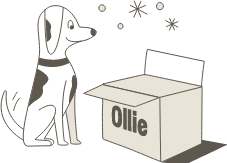
The nutrition your dog needs,
the food they want.

Enjoying our articles? Subscribe our Newsletters and get new articles directly to your inbox
You might also like
26 August 2025
4 MINS READ
Can I Make Fresh Dog Food Myself Instead?
If you’re thinking about switching your dog to a fresh food diet, you might be wondering: “Should I buy fresh dog food or make it at home?” It’s a fair question. Many pet parents like the …
by Ollie Pets
26 August 2025
4 MINS READ
Is Fresh Dog Food Safe?
If you’re thinking about switching your dog to a fresh food diet, you might be asking yourself: “Is fresh dog food safe?” It’s a smart question—because feeding fresh means you’re worki…
by Ollie Pets
26 August 2025
4 MINS READ
How Do I Know How Much Fresh Dog Food To Feed?
If you’ve switched your pup to fresh food, you’re probably wondering: “How much fresh dog food should I feed?” It’s not as simple as scooping kibble from a bag—fresh food is more nutri…
by Ollie Pets
